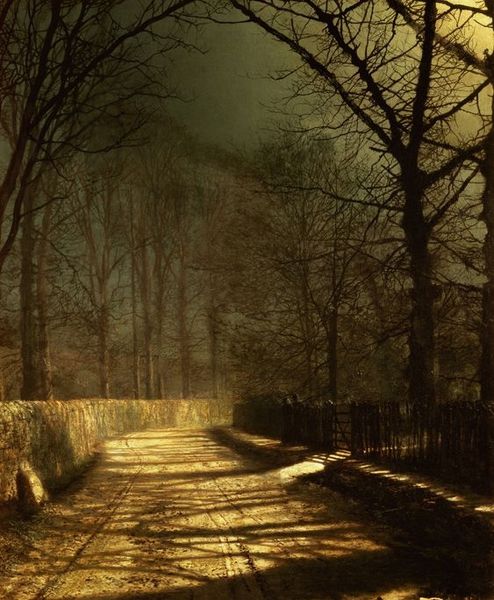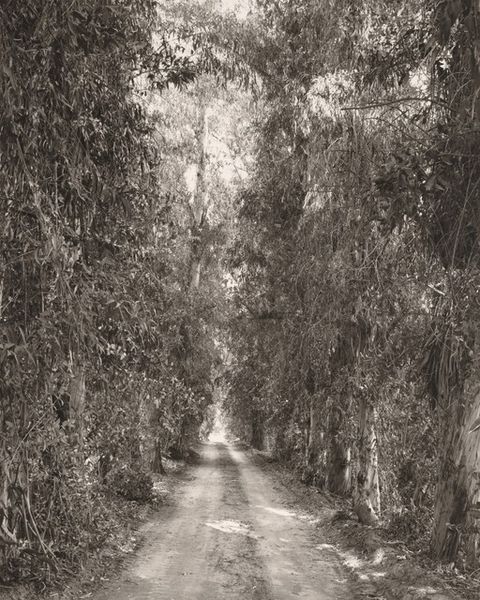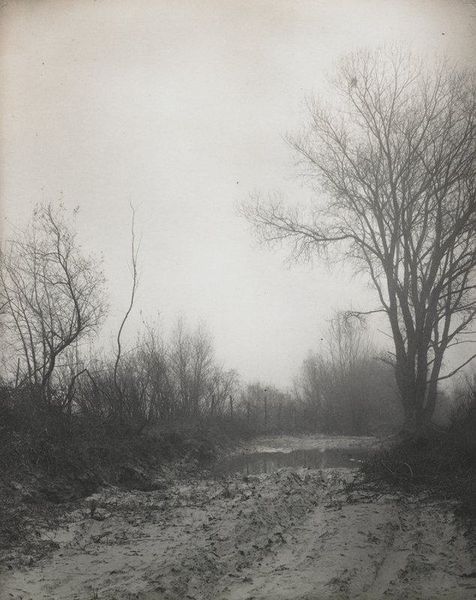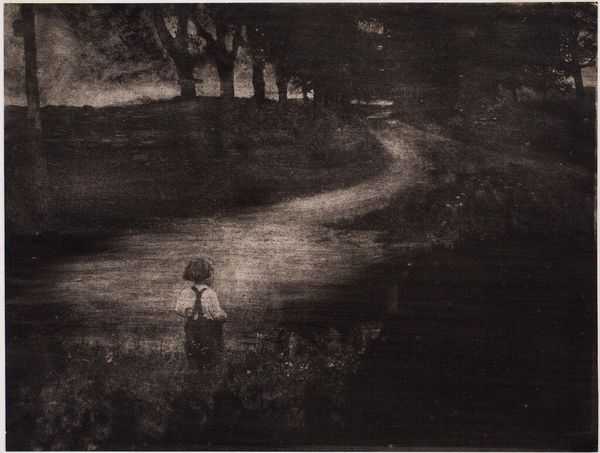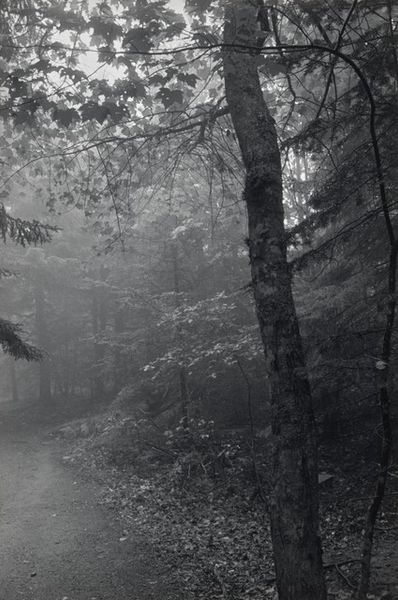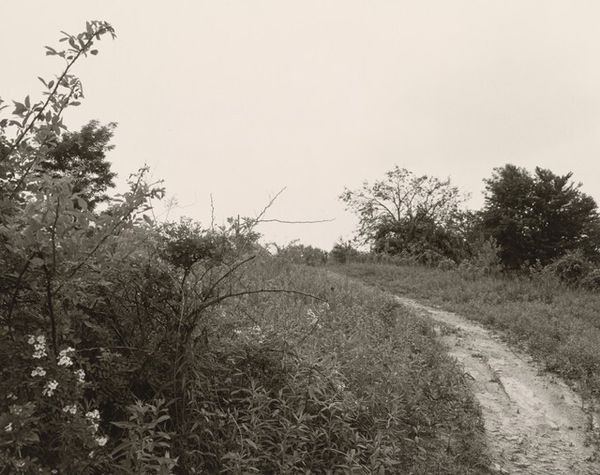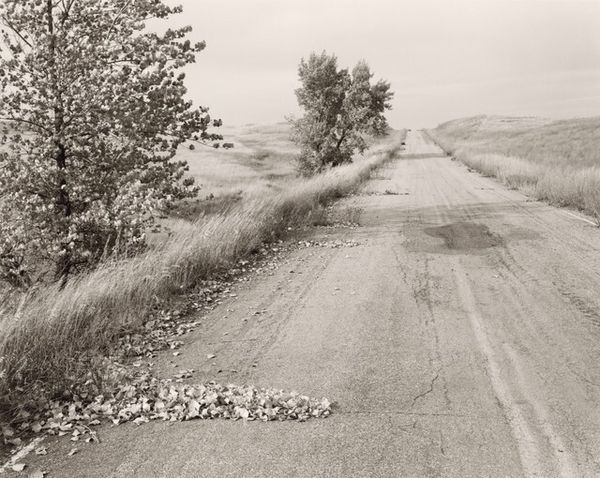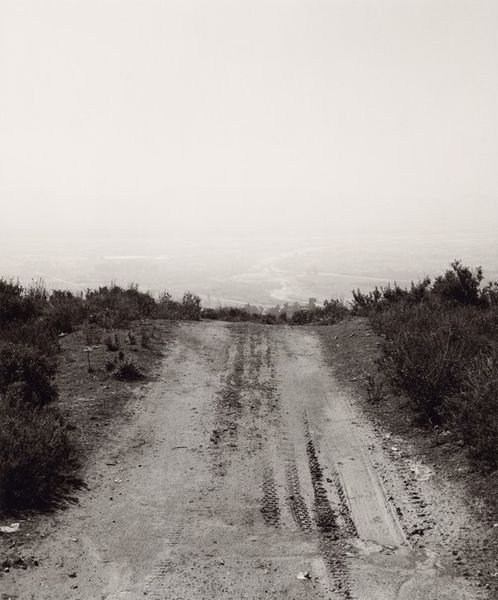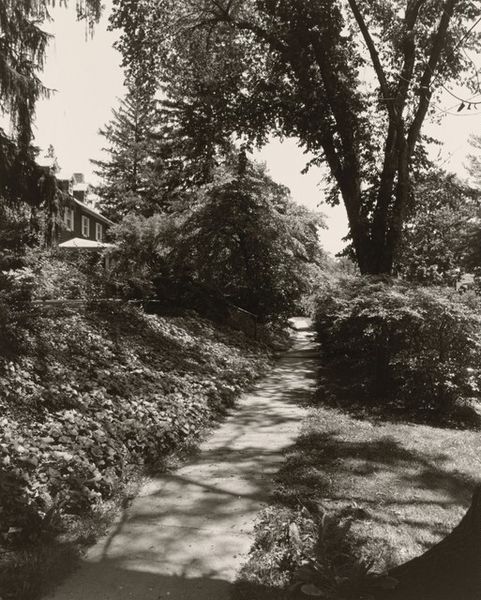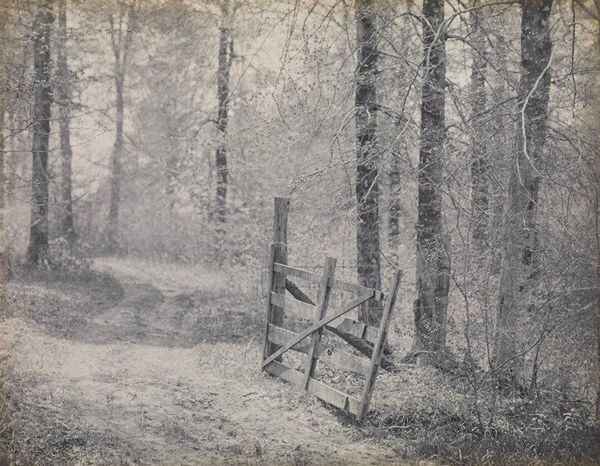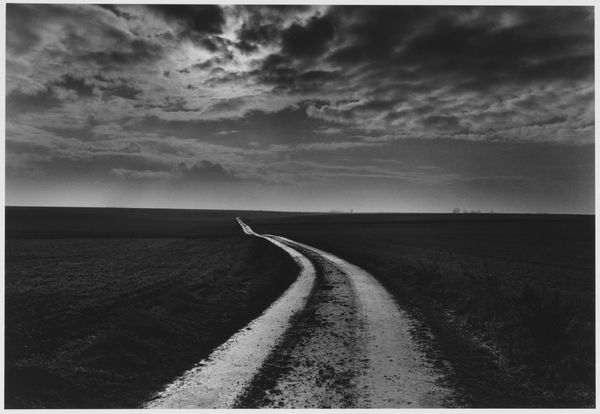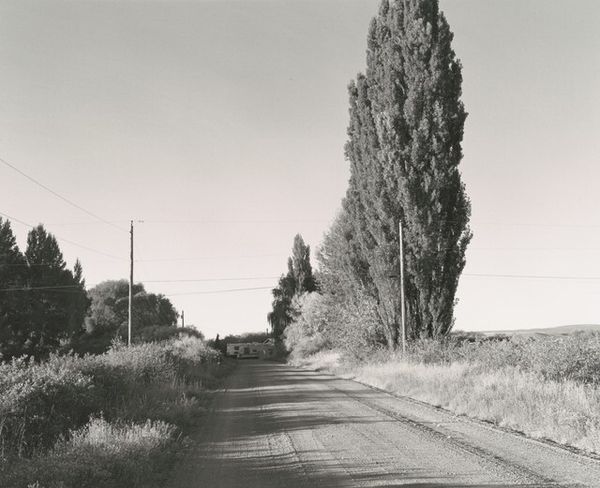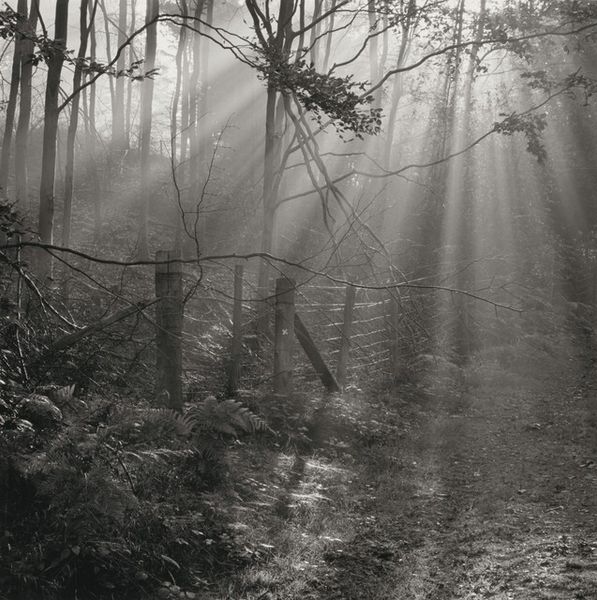
photography, gelatin-silver-print
#
pictorialism
#
countryside
#
landscape
#
photography
#
gelatin-silver-print
#
fog
#
realism
#
monochrome
Dimensions: 11 1/16 x 15 1/16 in. (28.1 x 38.26 cm) (image)15 15/16 x 19 15/16 in. (40.48 x 50.64 cm) (mount)
Copyright: No Copyright - United States
Editor: We're looking at "Le Chemin Creux," a gelatin-silver print made in 1937 by Léonard Misonne, now at the Minneapolis Institute of Art. It's a black and white landscape… kind of hazy and dreamlike. What do you see in this piece? Curator: Misonne’s work, and especially this photograph, provides an entry point into thinking about the representation of rural life during a period of immense social and political upheaval in Europe. This “hollow road,” as the title translates, becomes more than just a pretty scene. Editor: How so? Curator: Well, consider the historical context. In the 1930s, the romanticized view of the countryside often masked the harsh realities of agricultural labor and class divisions. Misonne, aligned with pictorialism, uses soft focus and atmospheric effects – the fog you mentioned – to create a nostalgic image, but does it also, perhaps unintentionally, obscure those socio-economic realities? Is it romanticizing a difficult way of life? Editor: That's interesting. I hadn’t thought about it that way. The fog does make it feel very…removed. Do you think that's intentional? Curator: It’s hard to say definitively what the artist intended. However, pictorialism itself was, in many ways, a reaction against the rapid industrialization of the early 20th century. So, perhaps Misonne is creating an idealized space, a retreat from modernity, which, in turn, allows us to question what is being left out of the picture. What voices and experiences are absent? Editor: That makes me look at the image differently. It's not just a peaceful scene, but something more complex. Curator: Exactly. It's a reminder that even seemingly simple landscapes are deeply intertwined with issues of power, representation, and historical context. Editor: This gives me so much to consider about how we interpret art. Thank you! Curator: My pleasure.
Comments
No comments
Be the first to comment and join the conversation on the ultimate creative platform.

